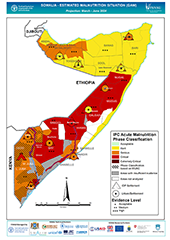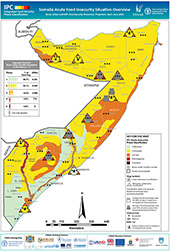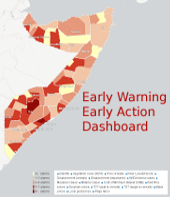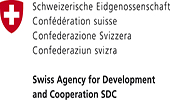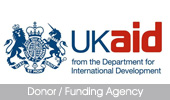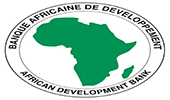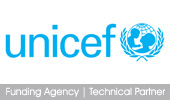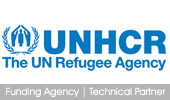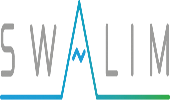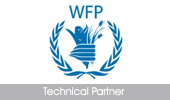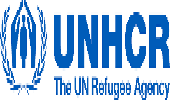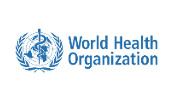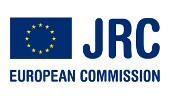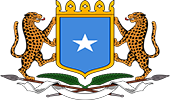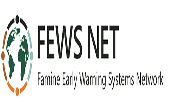Multi-Partner Technical Release on Updated IPC Analysis for Somalia for October 2022 to June 2023 (English)
Issued: December 13, 2022
Nearly 8.3 million people across Somalia face Crisis (IPC Phase 3) or worse acute food insecurity outcomes
Famine (IPC Phase 5) is projected in three areas
13 December 2022, Mogadishu – Amid an anticipated scale-down in humanitarian assistance starting in April 2023 due to insufficient funding, approximately 8.3 million people across Somalia are expected to face Crisis (IPC Phase 3) or worse acute food insecurity outcomes between April and June 2023. This unprecedented level of need within Somalia is driven by the impacts of five consecutive seasons of poor rainfall, a likely sixth season of below-average rainfall from March to June 2023, and exceptionally high food prices, exacerbated by concurrent conflict/insecurity and disease outbreaks. Furthermore, Famine (IPC Phase 5) is projected between April and June 2023 among agropastoral populations in Baidoa and Burhakaba districts of Bay region and among internally displaced people (IDP) in Baidoa town of Bay region and in Mogadishu. These three areas are already currently experiencing very high levels of acute malnutrition and mortality consistent with Emergency (IPC Phase 4) outcomes. In addition, an increasing number of people are expected to be in Catastrophe (IPC Phase 5) in multiple other areas across Somalia through mid-2023. The results of past integrated surveys conducted between May and July 2022 and subsequent IPC acute malnutrition analysis conducted in August remain valid, with the total estimated acute malnutrition burden in Somalia reaching approximately 1.8 million children, including 513,550 children who are likely to be severely malnourished, through July 2023.
In addition to the Famine (IPC Phase 5) projection in Bay region and Mogadishu, several areas in central and southern Somalia have an increased Risk of Famine between April and June 2023 if (1) the 2023 Gu season rainfall turns out to be poorer than currently predicted, leading to more crop and livestock production failures and (2) humanitarian assistance does not reach the country’s most vulnerable populations. The areas and population groups facing an increased Risk of Famine are Hawd Pastoral of Central and Hiiraan; Addun Pastoral of Northeast and Central; Coastal Deeh Pastoral of Central; Sorghum High Potential Agropastoral of Middle Shabelle; and IDP settlements in Garowe, Galkacyo, and Dollow. Emergency (IPC Phase 4) levels of acute malnutrition and elevated mortality levels are already occurring in these areas.
Funding for humanitarian food assistance is currently sufficient to reach over 5.8 million people per month, on average, through March 2023, which is expected to mitigate the size of the acutely food-insecure population and prevent the worsening of food security and nutrition outcomes in many areas. However, levels of acute food insecurity across Somalia remain very high and will further deteriorate if food assistance is not sustained at similar levels beyond March. Between October and December 2022, an estimated 5.6 million people are still experiencing Crisis or worse (IPC Phase 3 or higher) outcomes, including 214,000 people estimated to be in Catastrophe (IPC Phase 5), meaning they have not received sufficient food assistance to prevent food consumption gaps. While the level of food assistance has scaled up since July and is expected to continue at high levels through March, the number of people supported with food assistance will steeply decline by around 60-80 percent between April and June 2023. If humanitarian food assistance is not scaled up and sustained, then acute food insecurity and malnutrition levels are expected to deteriorate further and faster between April and June 2023, with approximately 8.3 million people expected to face Crisis (IPC Phase 3) or worse outcomes, including 2.7 million people that will likely be in Emergency (IPC Phase 4) and at least 727,000 people that will likely be in Catastrophe (IPC Phase 5).
Urgent and timely scaling up of integrated humanitarian assistance (in-kind food, cash/voucher transfers, nutrition, WASH, and health-related) is required through at least June 2023, and likely through late 2023, to prevent Famine (IPC Phase 5) – defined by extreme levels of food insecurity, acute malnutrition, and excess mortality, including starvation – among rural and IDP populations in Baidoa and Burhakaba districts of Bay Region, Baidoa town, and Mogadishu and to prevent the Risk of Famine in seven additional areas.
The conclusions above are based on updated IPC Acute Food Insecurity and Famine Risk Analyses conducted in November 2022 by 47 technical experts, representing 22 institutions (government, UN, NGO, and IPC GSU-the Integrated Food Security Phase Classification Global Support Unit). IPC GSU provided technical support throughout the analysis process.
The cumulative impacts of consecutive seasons of poor rainfall and persistent drought are expected to lead to a worsening of the humanitarian situation (i.e., adverse impacts on livelihoods, food security, nutrition, and mortality outcomes) in Somalia through at least mid-2023. Consecutive poor-to-failed harvests, the loss of agricultural income among farmers and the continued loss of livestock among pastoralists are contributing to worsening food security and nutrition outcomes and pushing poor and vulnerable communities to the brink of starvation. In addition to poor rainfall and persistent drought, other drivers of acute food insecurity and malnutrition in Somalia include high food prices, conflict/insecurity and disease outbreaks. Both drought and conflict are also leading to further population displacement from rural areas to IDP settlements in urban towns and cities, and newly displaced people are arriving in desperate condition.
While the ongoing Deyr (October-December 2022) rains marginally replenished pasture and water resources and enabled crop cultivation in some areas, water and pasture scarcity persists and crop production prospects for the January 2023 harvest are grim. As of mid-December, cumulative Deyr season rainfall between October and December 2022 ranges from 25 to 55 percent below average across most parts of Somalia. Due to the impacts of drought on livestock health, poor and vulnerable pastoral households currently have limited access to milk and lack saleable animals. Pastoral households have also accumulated very high debt burdens, driven by the prohibitive costs of water and feed for livestock, increased reliance on purchasing food for the family on credit, and abnormal livestock migration to distant areas in search of pasture and water. Households in agropastoral and riverine livelihood zones have had several consecutive failed cereal harvests, with further disruption to cash crop and cereal production in riverine areas due to low water levels in the Juba and Shabelle Rivers. In agropastoral and riverine areas, area planted is far below normal due to the poor rains, the displacement of households away from their farms, and farmers’ reduced ability to afford seeds, irrigation, and other inputs.
Accordingly, the 2022 Deyr season cereal harvest in southern Somalia is expected to be 40-60% below the 1995-2021 average, and agricultural labor opportunities are very low for poor households who rely on this income source. Despite a slight reduction in recent months, staple food and fuel prices remain at atypically to record-high levels and out of reach for most poor rural, urban and displaced families. In most regions across Somalia, prices in October 2022 were far above the 2017-2021 five-year average, including for local cereals (32-142%), imported rice (27-85%), and diesel (43-102%). Water prices in October 2022 were 9-154% above the five-year average in most of regions of the country. Prices are expected to remain at abnormally high levels through at least mid-2023. Given the likelihood of below-average April to June 2023 Gu season rainfall, the 2023 Gu season harvest is also estimated to be 40-60% below the 1995-2022 average. This will also limit income from agricultural employment for poor households.
As a result of these compounding shocks, many rural households face widening food consumption gaps, and the erosion of their livelihoods limits their coping capacity. Social support systems are increasingly overstretched in many parts of the country. These factors have driven a surge in population displacement from rural areas to IDP settlements and towns and cities.
Assumptions for April-June 2023 Outcome Projections
Drought: The April-June 2023 Gu rainy season is likely to be below normal. According to the latest forecasts and analysis by the Climate Hazards Center, there is a 62% probability that cumulative Gu rainfall will be within the lowest tercile range. This will represent the sixth season of below-average rainfall. In these conditions, households will not be able to recover from the significant loss of livestock, and further reductions in household herd sizes are expected. Many households have already lost or sold their last breeding animal, and poor livestock body conditions among the remaining animals will suppress reproduction levels. As a result, the quantity of milk produced will be significantly low, which will contribute to elevated child malnutrition levels (FAO/FSNAU). The 2023 Gu crop harvest is expected to be 40-60% below average, not only due to forecasted below-average rainfall, but also a lack of seeds and other agricultural inputs, as well as high levels of displacement of drought-affected households away from their fields, with limited means to return to their villages to cultivate.
Prices: Water prices – which have already risen six times higher than that observed in January 2022 – will likely remain high (FSNAU), and there is concern that groundwater resources could become exhausted in densely populated areas of Baidoa. Local and imported staple food prices – with local prices already more than double the average in Baidoa – are also expected to remain far above average, influenced by both the national cereal deficit and high global food and fuel prices, the latter of which is not estimated to decrease due to ongoing war in Ukraine (projections for key imported commodities range between 20 and 15% higher than in 2021 (WB)).
Conflict: Physical access to markets is expected to reduce, while disruptions to trade flows and livelihoods are expected to increase, due to higher levels of conflict between government forces/community militias and insurgents. The volatility of the situation will likely impede humanitarian assistance deliveries and services, especially for nutrition and health assistance that rely on the delivery of in-kind and/or in-person services, rather than cash-based transfers.
Displacement: Drought and conflict are likely to force more displacement and impede response interventions, with an influx of IDPs expected to continue in already crowded IDP settlements and urban areas. The concentration of humanitarian assistance and services in urban centers, such as Baidoa and Mogadishu, will likely further attract more IDPs.
Health: Based on current trends, morbidity and diseases outbreaks are expected to continue due to poor health and WASH conditions (including water shortage and very high water prices) in rural areas (especially in areas not reached by health services) as well as in IDP sites (especially those that are informal and hosting large numbers of new arrivals). There is a significant risk of the spread of disease outbreaks, such as cholera and measles, or the emergence of additional contagious disease outbreaks.
Humanitarian Assistance: is likely to be highly inadequate during the April to June 2023 period. Based on current level of funding, the number of people supported with food assistance will steeply decline by around 60-80 percent between April and June 2023. Accordingly, planned and funded humanitarian food assistance is expected to reach less than 25% of the populations of Burhakaba, Baidoa and Mogadishu on average during this three-month period (i.e. it will not be significant enough to mitigate Famine (IPC Phase 5) outcomes in these areas). In addition, according to nutrition cluster partners, the current levels of financial and operational investment are also insufficient to sustain or scale-up levels of coverage and outreach in other sectors that are crucial to preventing Famine, namely in the health, WASH, and nutrition sectors.
In pastoral areas, poor pastoralists are unable to cope with the extended impact of the ongoing drought due to rising costs of water and food, especially when they are already experiencing a significant decline in saleable animals due to distressed sales and excess deaths. Poor pastoral households are expected to face moderate to large food consumption gaps through June 2023, based on few livestock births, reduced income from livestock sales, and low availability of milk for both adults and children. Accordingly, most pastoral livelihoods across Somalia are classified in Crisis (IPC Phase 3) or Emergency (IPC Phase 4) between April and June 2023. Specifically, Emergency (IPC Phase 4) is expected in Guban Pastoral; Northern Inland Pastoral of Northwest and Northeast; Hawd Pastoral of Northwest, Northeast, Central and Hiiraan; Addun Pastoral of Northeast and Central; Coastal Deeh of Northeast, Central and Shabelle; and East Golis Pastoral of Northwest.
Agropastoral and riverine livelihood zones, which have experienced at least five consecutive seasons of substantially below-average or failed harvests, face the likelihood of another poor harvest during the 2023 Gu season. As a result, poor households who sustained substantial crop losses and low income from agricultural employment face moderate to large food consumption gaps through at least June 2023. Most agropastoral and riverine livelihoods across Somalia are classified in Crisis (IPC Phase 3) or Emergency (IPC Phase 4) between April to June 2023, while Famine (IPC Phase 5) is projected in Low Potential Agropastoral and Sorghum High Potential Agropastoral of Baidoa and Burhakaba districts in Bay region. Specifically, Emergency (IPC Phase 4) is expected in Toghdeer Agropastoral and several agropastoral livelihood zones in Bay, Bakool, Gedo, Hiiraan, Middle Shabelle, and Lower and Middle Juba regions, including parts of Southern Agropastoral, Bay Bakool Low Potential Agropastoral, Sorghum High Potential Agropastoral, and Cowpea Belt Agropastoral.
A majority of the estimated 3.8 million IDPs across Somalia are poor and have limited livelihood assets, few income-earning opportunities in the context of abnormally high food prices, low access to communal support and high reliance on external humanitarian assistance. As more people become displaced due to drought and conflict, IDP populations in existing and new settlements are increasing. New IDPs arrive in desperate conditions and often face numerous challenges accessing humanitarian assistance after their arrival. Of particular concern are marginalized and minority groups among the displaced populations. As a result, a significant proportion of IDPs face moderate to large food consumption gaps through June 2023. Most of the main IDP settlements across Somalia are classified in Emergency (IPC Phase 4) between April and June 2023. These include IDP settlements in Bossasso, Qardho, Garowe, Galkacyo, Dhusamareb, Dollow, Dhobley (Afmadow) and Kismayo. Baidoa IDPs and Mogadishu IDPs are projected to face Famine (IPC Phase 5) over the same period.
The urban poor across Somalia – who already spend a disproportionately large amount of their income on food (60-80%) – continue to struggle to feed themselves in the face of rising food prices. They have limited room to absorb the impact of further food price increases and have limited opportunities to expand their incomes. Declining labor wages and rising food prices have led to sharp declines in the wage labor to cereals terms of trade. Many urban areas are classified as Crisis (IPC Phase 3), including Bossasso, Garowe, Galkacyo, Dhusamareb, Baidoa, Dollow, and Kismayo.
Results from 29 integrated surveys conducted in May, June and July 2022 indicate worsening levels of acute malnutrition, which have already reached Critical (GAM WHZ 15-29.9%) levels – indicative of Emergency (IPC Phase 4) – in many areas of central and southern Somalia. Worsening food security conditions and limited access to clean water have led to outbreaks of acute watery diarrhea (AWD)/cholera in many areas. Coupled with an increase in measles cases, disease incidence is contributing to rising levels of acute malnutrition, reflected in the rising number of moderately and severely malnourished children admitted to treatment centers. Acute malnutrition case admissions among children under age five rose significantly in 2022.
In addition, based on the results of nine follow-up surveys conducted in October 2022 among rural and displaced populations, their nutrition situation remained Critical (GAM WHZ 15-29.9%) in all of the areas surveyed, due to a combination of contributing factors, including limited access to milk, high food prices as well as continued outbreak of measles and AWD/cholera.
Levels of mortality (Crude Death Rate (CDR) and/or Under-Five Death Rate (U5DR)) have surpassed the Emergency (IPC Phase 4) thresholds in several areas: agropastoral populations in Baidoa and Burhakaba districts and displaced populations in Baidoa, agropastoral populations in Middle Shabelle and displaced populations in Mogadishu.
Based on the results from 29 integrated surveys conducted between May and July 2022 and subsequent IPC acute malnutrition analysis conducted in August (and which remain valid), the total acute malnutrition burden for Somalia from August 2022 to July 2023 is estimated at approximately 1.8 million children under the age of five years (total acute malnutrition burden), including 513 550 who are likely to be severely malnourished.
Due to both funding and access constraints, humanitarian assistance is not reaching some of the people in need, especially those in hard-to-reach areas. Ensuring timely and adequate humanitarian assistance to newly displaced populations and minority vulnerable groups and improved coverage in hard-to-reach areas should remain a priority.
In order to prevent Famine (IPC Phase 5) and worsening humanitarian conditions in Somalia, urgent action is required for a multi-faceted response, including food security, nutrition, health and WASH, as well as improved humanitarian access in hard-to-reach areas.
Annex: Somalia Risk of Famine, April-June 2023
Risk of Famine refers to the reasonable probability of an area going into Famine in the projected period. While this is not perceived necessarily as the most likely scenario, it is a scenario that generally has a realistic chance of occurring. It complements the Famine and Famine Likely projections of the most likely scenario by providing insights of potential Famine if prospects evolve in a manner worse than anticipated. For additional information, see the IPC Famine Fact Sheet.
In the most likely scenario, approximately 727 100 people are expected to be in IPC Phase 5 between April and June 2023. Famine (IPC Phase 5) is projected among agropastoral populations in Baidoa and Burhakaba districts, displaced populations in Baidoa town of Bay region, and displaced populations in Mogadishu, where over 20 percent of the population is expected to be in IPC Phase 5. In addition to these three areas, seven other areas face an increased Risk of Famine, meaning that Famine (IPC Phase 5) could occur (has reasonable chance of happening) between April and June 2023 if (1) the 2023 Gu season rainfall turns out to be poorer than currently predicted, leading to more crop and livestock production failures and (2) humanitarian assistance is not scaled up to reach the country’s most vulnerable populations. The areas and population groups facing an increased Risk of Famine are Hawd Pastoral of Central and Hiran; Addun Pastoral of Northeast and Central; Coastal Deeh Pastoral of Central, Sorghum High Potential Agro Pastoral of Middle Shabelle; and IDP settlements in Garowe, Galkacyo, and Dollow. The Risk of Famine in these areas is predicated on two key conditions :
(i) April to June 2023 Gu season crop and livestock production fail. Under this scenario, crop failure (more than 40-60 percent below the long-term average) and increased livestock deaths are anticipated. In the most affected livelihoods, cumulative livestock deaths would likely exceed current expectations and reach as high as 20-30 percent. Local crop production failure will significantly diminish seasonal agricultural employment, which is a main income source among poor agropastoral and riverine households. The combination of limited saleable animals and lack of agricultural employment opportunities would subject poor pastoral, agropastoral and riverine households to face widening food consumption gaps as they lack alternative income sources.
(ii) Planned humanitarian assistance (particularly in-kind food, cash/voucher transfers, nutrition, WASH, and health-related assistance) does not reach the most vulnerable populations, whether due to physical access constraints, logistical barriers, or the marginalization of certain groups. Given that the gap between the conditions in the most likely scenario and the conditions in the alternative Risk of Famine scenario is narrow, the aversion of Famine (IPC Phase 5) hinges on urgent scaling up and continuation of coordinated and multi-sectoral humanitarian assistance. While the above two conditions are considered the key drivers of the Risk of Famine scenario, there are additional factors that could result from or interact with these two conditions to lead to Famine (IPC Phase 5):
(iii) Although destitution and displacement in Somalia is already included in the most likely scenario, worsening drought during the 2023 Jilaal (January-March) and Gu (April-June) season could lead to a worse-than-anticipated influx of newly displaced people to already crowded IDP settlements and urban areas, where food and income sources and levels of food assistance remain limited. Overcrowded IDP settlements with poor water and sanitation conditions would likely result in a worsening outbreak of measles, acute watery diarrhea (AWD), or other diseases, with rising cases mostly affecting children under five years of age. Under this scenario, the interaction of high levels of food insecurity and disease could drive a rapid increase in levels of Global Acute Malnutrition (GAM) to 30 percent or higher and, at worst, an increase in excess mortality.
(iv) Increased conflict and insecurity lead to further increases in population displacement, disrupt market access and functionality, impede household access to livelihood opportunities and restricts access to humanitarian assistance, with a risk of potential exclusion of vulnerable groups, especially in central and southern Somalia.
The following risk factors need to be closely monitored throughout the projection period:
• Conduct follow up integrated food security, nutrition and mortality assessments in all areas facing the Risk of Famine
• Food prices, livestock prices, wage rates and terms of trade and water prices
• 2023 Gu season rainfall performance and impact on crop production, pasture and water (surface and groundwater) availability, livestock body conditions, births, deaths and milk availability
• Population displacement
• Admission of acutely malnourished children to treatment and feeding centers
• Disease outbreaks, including AWD/cholera and measles
• Coverage of and access to humanitarian food assistance, including food security, nutrition, WASH and health
To download full release in pdf format click here
For more information, please contact: William Swanson, Communications Specialist, FAO Somalia, Tel: +254 204000000, William.Swanson@fao.org; Lark Walters, Decision Support Advisor, Famine Early Warning Systems Network (FEWS NET), somalia@fews.net; Petroc Wilton, Communication Officer, World Food Programme Somalia, petroc.wilton@wfp.org, Tel: + 254 110909484; or Frank Nyakairu, IPC Communication Team Leader, IPC Global Support Unit, Tel +39 3277855865, Frank.Nyakairu@fao.org.
